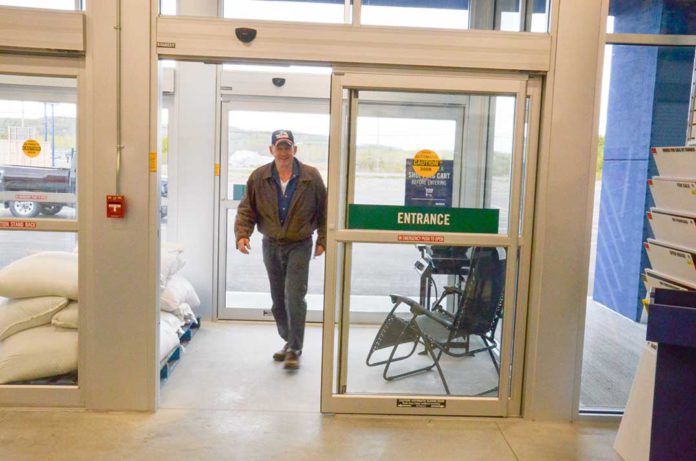It is time for First Nations to create their own nation states
To the Expositor:
Huge fire in Fort McMurray recently sending the entire population of the city out of the city environs. Thousands were forced from their homes by wildfire, evacuated to safety out of the city. Homelessness is capricious–it can happen to anyone anytime for any number of reasons. In the case of Fort McMurray, a forest fire rendered thousands of people homeless. Recovery may take weeks, months, even years.
Closer to home, the dispossession of the homeless is taking place. Once again, Whitefish River First Nation is going to forcibly evict an Anishinaabe female elder from traditional Anishinaabe lands. Why is it acceptable for a First Nation to eject an Anishinaabe female, a woman whose family, clan and network roots reach back into the antiquity of Wiigwaaskinaga, from traditional indigenous territory? Why is it that traditional Anishinaabe customs and protocols about indigenous land tenure are not recognized or accepted? Why is it that Indigenous and Northern Affairs Canada does not acknowledge their own documented words, “that informal land holdings are recognized?” Why did officials of Whitefish River present an undefended female with an unaddressed envelope which contained a Notice of Trespass and Order to Vacate? Why do verbal promises of assistance not match up with the ham-fisted legalese of a Notice of Trespass and Order to Vacate? Why did seven separate written requests for assistance regarding home and land to Whitefish River First Nation go unanswered? How is it possible for an Anishinaabe female to be trespassing on her own traditional indigenous territory? How is it possible for an Anishinaabe woman to be homeless in her own homeland? How many other indigenous females has this happened to before, and not a peep out of anyone about it?
There are some serious misunderstandings about what constitutes Anishinaabe lands. For example, the Indian Act, a legal instrument created by the Government of Canada, without input by Anishinaabe people, asserts that “Indian” lands are “held” by the “Crown” for the use and benefit of “Indians.” In reality, the Government of Canada behaves as if “Indian lands” are government lands. “Indian lands” are not government lands. They are the sovereign territory of the Anishinaabek and other indigenous nations across Canada not having been given, or given up, or given over, to the Government of Canada.
Someone suggested to me one day recently, “you can’t take it with you when you die.” Interesting, isn’t it, that someone who is comfortably ensconced in their own “certificate of possession” can be so matter-of-fact about not taking it with you, when landless females in their midst are struggling to hold on to their own indigenous homelands?
In Sheguiandah, there is a billboard that says, “Welcome to the oldest settlement on Manitoulin Island.” It is a reference to the 10,000 years of indigenous habitation and ownership of the Sheguiandah area, and indeed, all of Turtle Island. In contrast, the nation called Canada has only been in existence since 1867, a mere 149 years.
First Peoples worldwide says that there are about 400 million indigenous peoples around the globe. There are more than 5,000 indigenous tribes, across 90 countries, yet constitute only six percent of the world’s peoples. Indigenous peoples are representative of 90 percent of the global cultural diversity. Indigenous peoples own 20 percent of Mother Earth’s lands, and these lands contain 80 percent of the planet’s remaining diversity. Big responsibility—so little time remaining. It takes mere minutes to cut down a tree, and yet it takes decades for a tree to take root, grow, and mature. Destruction requires no big genius. Creation is one of the most challenging, stimulating, and restorative practices that humans can exercise.
So, Canada is finally going to ratify the United Nations Declaration on the Rights of Indigenous People, 10 years after other countries have accepted the same document.
I think it’s time for the Anishinaabek of Wiigwaaskinaga to create our own community-nation-state. Notice that I did not say “Indian reserve” or “First Nation” or “tribe.” None of those words accurately describe who we are. None of those words are words that we used traditionally to describe ourselves. It’s up to us to say who we are, to say where we come from, and to say what our purpose on Mother Earth is. That is not the prerogative of Whitefish River First Nation, or Indigenous and Northern Affairs Canada or even the Government of Canada. We say who we are, and we say that we own our own lands. Mii sa iw.
Marie McGregor Pitawanakwat
Whitefish River First Nation



